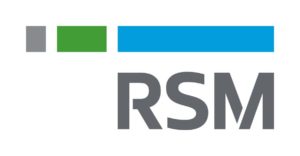Op-Ed: Puerto Rico enters 21st century of investing

Through executive order OE-2019-013 Puerto Rico Gov. Ricardo A. Rosselló shared with all government agencies and corporations his administration’s investment policy guidelines.
The governor has charged the Fiscal Agency and Financial Advisory Authority (“AAFAF” by its initials in Spanish) with the responsibility of providing investment policy principles to each subdivisions and component of the government of Puerto Rico including public corporations and municipalities.
Within a year, each government unit must have an Investment Policy Statement that describes governance, investment objectives, risk tolerance, and investing constraints, among criteria pursuant to these guidelines.
The new guidelines replace those promulgated by the now defunct Government Development Bank. While they are comparable in many aspects, there are a few differences that reflect alignment with recent developments in the industry.
At the top of the list is the inclusion of environmental, social and governance (ESG) factors in investment philosophy and strategy. The government of Puerto Rico recognizes that as part of its fiduciary responsibility, it must evaluate how its investment dollars affect the environment, society and corporate governance.
Most investors would rather meet their financial objectives avoiding investments in companies whose activities are detrimental to the environment such as unregulated oil exploration or unsustainable agricultural practices.
Today, it is possible comply with this philosophy without sacrificing returns.
In fact, a recent report from the Forum for Sustainable and Responsible Investment shows that ESG risk factors allow investors to create a modern “best-in-class” investment approach that generates performance that is in line with — and often exceeds — market benchmarks.
ESG factors are material to businesses and profitability, and investors are starting to learn to “screen” their investments positively for these considerations. Solutions to climate change for example, not only provide relief for a current global challenge, they also allow investors to tap into the burgeoning market of renewable energy products and services.
Similarly, innovation in health services, waste disposal and recycling, and gender diversity and women’s leadership, are criteria contributing to corporate financial performance today.
AAFAF’s new investment guidelines also make room for economically targeted investing; up to 3% of an investment portfolio can be directed to vehicles that spur economic growth in Puerto Rico.
While obligations of the Commonwealth are no longer part of the list of allowable assets, private equity and venture capital funds are. Institutional investors today have various opportunities within this asset class to invest in Puerto Rican companies or alongside foreign and stateside investors looking to establish operations in our island.
Since 2014, when the Private Equity Funds Act was passed, the Office of the Commissioner of Financial Institutions of Puerto Rico has registered more than 12 local firms that manage private equity, private debt and venture capital funds in Puerto Rico.
Overall, I am glad to see that many of the principles we foster when educating our clients are starting to become mainstream among local investors.
AAFAF’s new policies we believe are definitely headed in the right direction. Investors now need to engage knowledge investment consultants who will not only help them to comply with this new standard but perform at or above their expectations.












